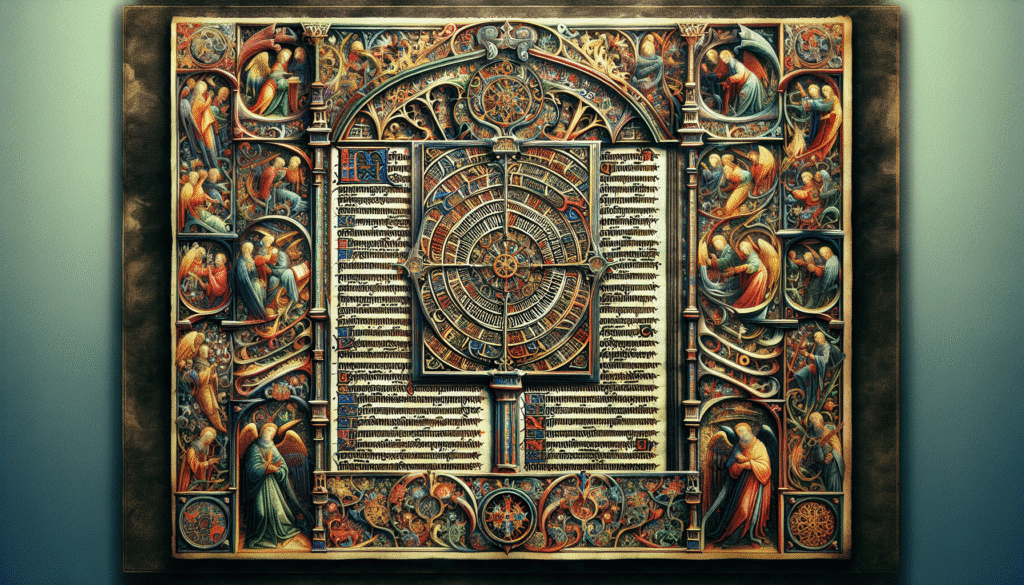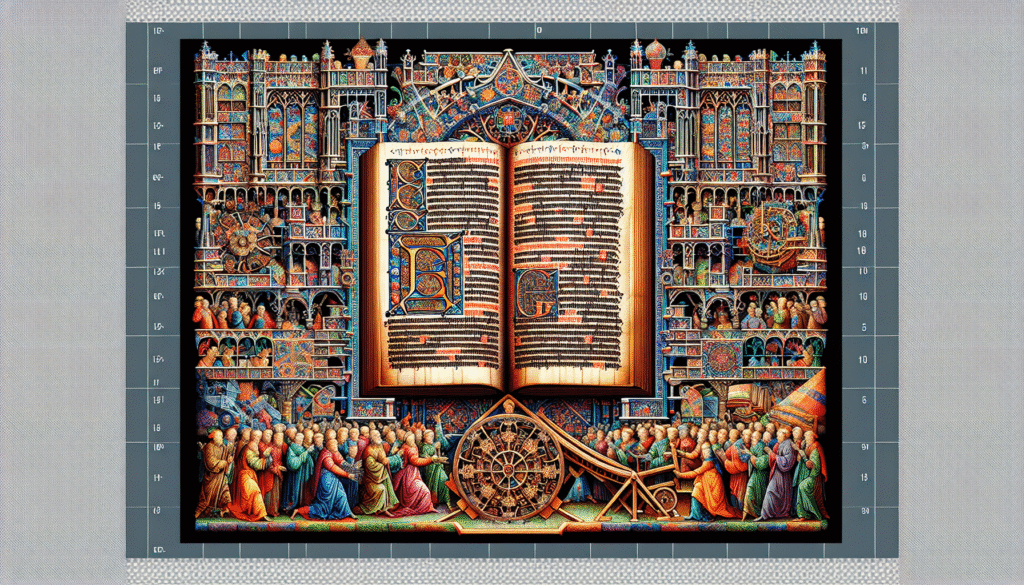Have you ever wondered how a single book could alter the course of human history? The Gutenberg Bible is often heralded as a key pivot point, but why does it hold such monumental importance? I’m someone who has explored the corridors of history with a PhD in Theology, digging into ancient texts and the tales they tell. Knowing why the Gutenberg Bible marked a turning point is essential, especially in an era saturated with digital texts, and in 2025, understanding the roots of mass communication can illuminate how we exchange information today.
In this guide, we’ll unpack the Gutenberg Bible’s transformational impact on society, religion, and literacy. From its technological innovations to its widespread influence, we’ll cover why this 15th-century artifact remains a focal point of historical discussion.
TL;DR
The Gutenberg Bible, printed in the 1450s by Johannes Gutenberg, revolutionized the way information was disseminated, ushering in a new age of literacy and learning. Its creation marked a significant shift from manuscript to mechanical book production, making texts more accessible and affordable. This innovation not only influenced religious and educational practices but also laid the groundwork for the Protestant Reformation and the broader Renaissance movements.

The Invention of the Printing Press
The Technological Leap
In the mid-15th century, Johannes Gutenberg, a German blacksmith and goldsmith, invented the movable-type printing press. This marked a pivotal departure from the labor-intensive hand-copying methods that preceded it. The innovation allowed for the rapid production of books and other texts, changing the landscape of knowledge dissemination.
- Movable Type: Small, reusable metal letters that could be arranged and rearranged to print different text.
- Printing Press Mechanism: Inspired by wine presses, it applied even pressure to a print medium, ensuring clear and consistent impressions.
Early Experiments
Gutenberg was not the first to play with printing ideas, but his design was the most practical and effective. His main challenge was perfecting the typeface and press system that could mass-produce pages without sacrificing quality. The introduction of oil-based ink was also a crucial factor, as traditional water-based inks didn’t adhere well to metal type.
Implications for Society
The printing press democratized information, paving the way for an era where literacy could flourish beyond the clergy and aristocracy. It shifted the balance of power from ecclesiastical and monarchical control over texts to a more open-access paradigm.
The Gutenberg Bible: An Overview
What is the Gutenberg Bible?
Printed in the 1450s, the Gutenberg Bible was the first major book created using movable type. The Bible consists of the Latin Vulgate, a version widely used by the Catholic Church at the time.
- Number of Copies: Initially, about 180 copies were produced, with 49 surviving today.
Physical Description
The Gutenberg Bible is a two-volume set, showcasing unparalleled craftsmanship with 42 lines per page, hence often known as the “forty-two-line Bible.” These volumes measure about 44.5 x 30.5 cm each, remarkable for their uniformity and elegance.
Historical Context
The Bible emerged during a period when the Catholic Church dominated theological and intellectual life in Europe. By mass-producing a religious text, it effectively reduced the Church’s tight grip on sacred information.

Cultural and Religious Impact
Altering Religious Access
Before the Gutenberg Bible, Bibles were handwritten, thus costly and rare. With mass production, religious texts became accessible to broader swathes of the population. This created a shift in how people engaged with religious practices, as they no longer needed to rely solely on church intermediaries for scriptural understanding.
Fueling the Reformation
The accessibility of the Bible contributed to the Protestant Reformation. Reformers like Martin Luther were empowered by direct engagement with the texts, which led to questioning and eventual Protestant splits from the Catholic Church.
Changing Educational Dynamics
Increased book availability spurred the establishment of schools and universities, drastically altering educational landscapes. Texts became educational tools rather than sacred relics, promoting a merit-based scholarly culture.
The Economic Impact
Cost of Production
The initial costs of the Gutenberg printing press were high, but the mass production capability quickly reduced the per-unit cost of books. This made books cheaper and more accessible over time, leading to a surge in literacy and book ownership.
Impact on Trade and Commerce
With texts available in various languages, trade could expand as merchants accessed information about markets, geographies, and laws more freely. The spread of printed text facilitated a broadened communication network, vital for commerce.
Knowledge as Currency
As literacy spread, knowledge became a form of currency. Those who could read had access to information that could elevate their economic status. The burgeoning middle class was, in part, spurred by this newfound information access.
The Gutenberg Bible Today
Collecting and Conserving
The surviving copies of the Gutenberg Bible are considered incredibly valuable, residing in prestigious collections. Institutions like the Library of Congress and the British Library hold some of these copies, safeguarding them for future generations.
Digital Reproductions
In our current digital age, the Gutenberg Bible has been digitized, allowing global access. This technological nod to its roots means that anyone with internet access can view the pages that spurred a historic revolution in knowledge dissemination.
Ongoing Relevance
Even today, discussions around the Gutenberg Bible highlight issues of information accessibility, intellectual property rights, and the ethics of information dissemination. As we navigate similar challenges in our digital age, the lessons from the Gutenberg era remain pertinent.
FAQs
What made the Gutenberg Bible revolutionary?
The Gutenberg Bible introduced mechanical movable-type printing, drastically reducing book production costs and making texts widely accessible.
Why is the Gutenberg Bible important in history?
It marks a significant shift in information dissemination, aiding the spread of literacy, the Protestant Reformation, and the Renaissance.
How many Gutenberg Bibles still exist?
There are 49 known surviving copies, with variations across editions in terms of quality and completeness.
What was Gutenberg’s main innovation?
His main innovation was the development of the printing press and the use of movable type.
How did the Gutenberg Bible influence religion?
It democratized access to religious texts, enabling individual interpretation and fueling reforms.
People Also Ask
How did the Gutenberg Bible change education?
By making texts more accessible and affordable, it facilitated the growth of schools and universities, promoting widespread literacy.
What challenges did Gutenberg face?
Gutenberg faced technical challenges in crafting a practical press and developing oil-based inks.
Why did the Gutenberg Bible use Latin?
Latin was the liturgical language of the time, making it the most authoritative version of the Bible for mass production.
Is the Gutenberg Bible the first printed book?
It’s technically the first major book printed with movable type, although there were earlier block-printed texts.
How did Gutenberg’s invention impact society?
It democratized information access, led to religious reformations, and spurred the Renaissance.
The Gutenberg Bible was not just a book but a catalyst for change that has reverberated through centuries. As we continue to integrate and innovate within today’s digital landscape, reflecting on the roots of mass communication proves as enlightening as it is crucial. The wisdom nestled in its pages marked not just a new chapter for books but for human advancement itself.



